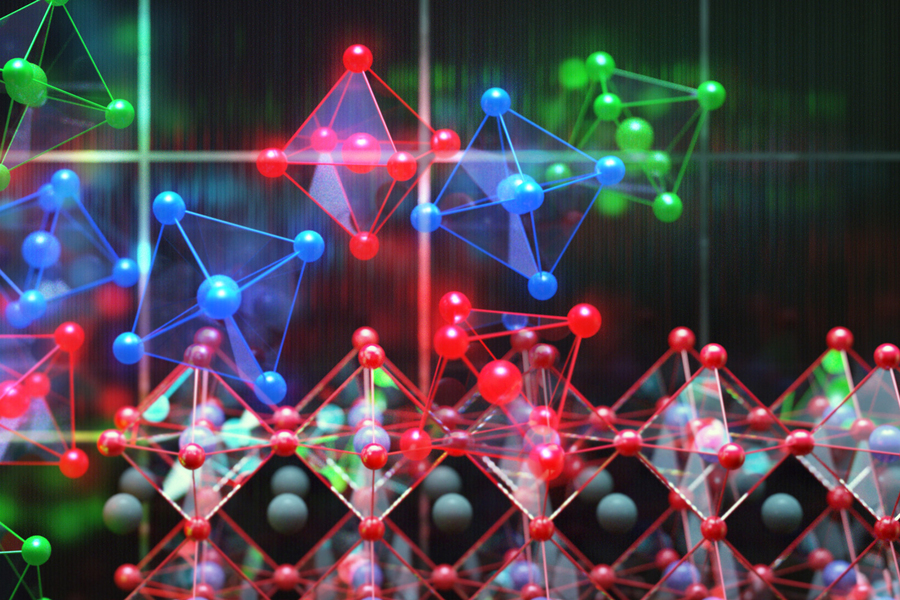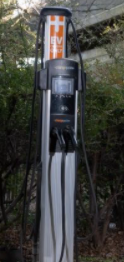2021/2/24 アメリカ合衆国・マサチューセッツ工科大学(MIT)

・ MIT、韓国科学技術研究所(KRICT)、韓国科学技術員(KAIST)、蔚山科学技術大学校およびジョージア工科大学(Georgia Tech)から構成される研究チームが、標準的なシリコン太陽電池のエネルギー効率を超える、ペロブスカイト太陽電池設計の新技術を開発。
・ ペロブスカイトは、太陽光パネルの材料としてシリコンの代替が期待されている。低コスト・低温度による極薄、軽量でフレキシブルな太陽電池の可能性を提供するものだが、エネルギー効率においてシリコン太陽電池に遅れをとっている。
・ 今回、ペロブスカイト太陽電池内の電荷経路と材料組成を改善することで、エネルギー効率 25.2%を達成(研究室デバイス)。シリコン太陽電池では現在 20~22%。
・ ペロブスカイトは天然鉱石の灰チタン石に類似した特定の格子構造を有し、それを構成する化学物質の組合せの数は膨大にある。太陽電池材料として競合するシリコンやガリウムヒ素(GaAs)に比べ安価で、よりシンプルな処理とプロセスで製造できるため、世界の関心を集めている。
・ シリコンや GaAs の処理では 1,000℃超の熱を要する一方、ペロブスカイトは溶液または蒸着により200℃以下で製造できる。また、太陽エネルギーを効率的に捕獲する極薄膜を形成するため、飛躍的な軽量化が可能。
・ また、シリコンに比べバンドギャップが広く、太陽光スペクトルの多様な領域を吸収できる。シリコンセルとの組合せでエネルギー効率の向上が図れるが、ペロブスカイトの単一の活性層のみでもシリコンや GaAs に迫る効率の達成が可能であることを実証した。
・ ペロブスカイトには、セルで発した電流を使用場所まで運ぶ透明導電層が含まれるが、この層がペロブスカイト自体に直接面していると電子と正孔が再結合して電流が起こらない。新設計ではペロブスカイトと導電層を中間層で分離し、電子の移動を促して再結合を回避した。
・ 同中間層は、二酸化スズの化学浴析出法により作製。理想的な特性を有する電子輸送層合成のタイミングを特定した。また、ペロブスカイトを安定させるための添加剤の利用では、バンドギャップに影響して光吸収の効率性を損なわせることがわかっていたが、今回はその量を 1%以下に抑えてバンドギャップを維持しながら安定性を向上させ、ペロブスカイト層自体を最適化した。
・ 25.5%のエネルギー効率は研究室スケールのデバイスによるものだが、今回開発した技術を現行の大規模なペロブスカイト太陽電池製造方法に適用し、さらに効率を向上できると考える。
・ ペロブスカイト太陽電池の長期的な耐久性は向上しているが、例えば数年毎で交換される携帯電話等の電子機器のように、短期間の使用を目的としたアプリケーションの可能性も今後の研究開発において考慮すべきと考える。
・ 本研究は 、 MIT Institute for Soldier Nanotechnology、NASA、 イ タ リ ア Eni SpA(MIT Energy
Initiative)、韓国国立研究財団(NRF)および国家科学技術研究会(NST)が支援した。
URL: https://news.mit.edu/2021/photovoltaic-efficiency-solar-0224
<NEDO海外技術情報より>
(関連情報)
Nature 掲載論文(アブストラクトのみ:全文は有料)
Efficient perovskite solar cells via improved carrier management
URL: https://www.nature.com/articles/s41586-021-03285-w
Abstract
Metal halide perovskite solar cells (PSCs) are an emerging photovoltaic technology with the potential to disrupt the mature silicon solar cell market. Great improvements in device performance over the past few years, thanks to the development of fabrication protocols1,2,3, chemical compositions4,5 and phase stabilization methods6,7,8,9,10, have made PSCs one of the most efficient and low-cost solution-processable photovoltaic technologies. However, the light-harvesting performance of these devices is still limited by excessive charge carrier recombination. Despite much effort, the performance of the best-performing PSCs is capped by relatively low fill factors and high open-circuit voltage deficits (the radiative open-circuit voltage limit minus the high open-circuit voltage)11. Improvements in charge carrier management, which is closely tied to the fill factor and the open-circuit voltage, thus provide a path towards increasing the device performance of PSCs, and reaching their theoretical efficiency limit12. Here we report a holistic approach to improving the performance of PSCs through enhanced charge carrier management. First, we develop an electron transport layer with an ideal film coverage, thickness and composition by tuning the chemical bath deposition of tin dioxide (SnO2). Second, we decouple the passivation strategy between the bulk and the interface, leading to improved properties, while minimizing the bandgap penalty. In forward bias, our devices exhibit an electroluminescence external quantum efficiency of up to 17.2 per cent and an electroluminescence energy conversion efficiency of up to 21.6 per cent. As solar cells, they achieve a certified power conversion efficiency of 25.2 per cent, corresponding to 80.5 per cent of the thermodynamic limit of its bandgap.



